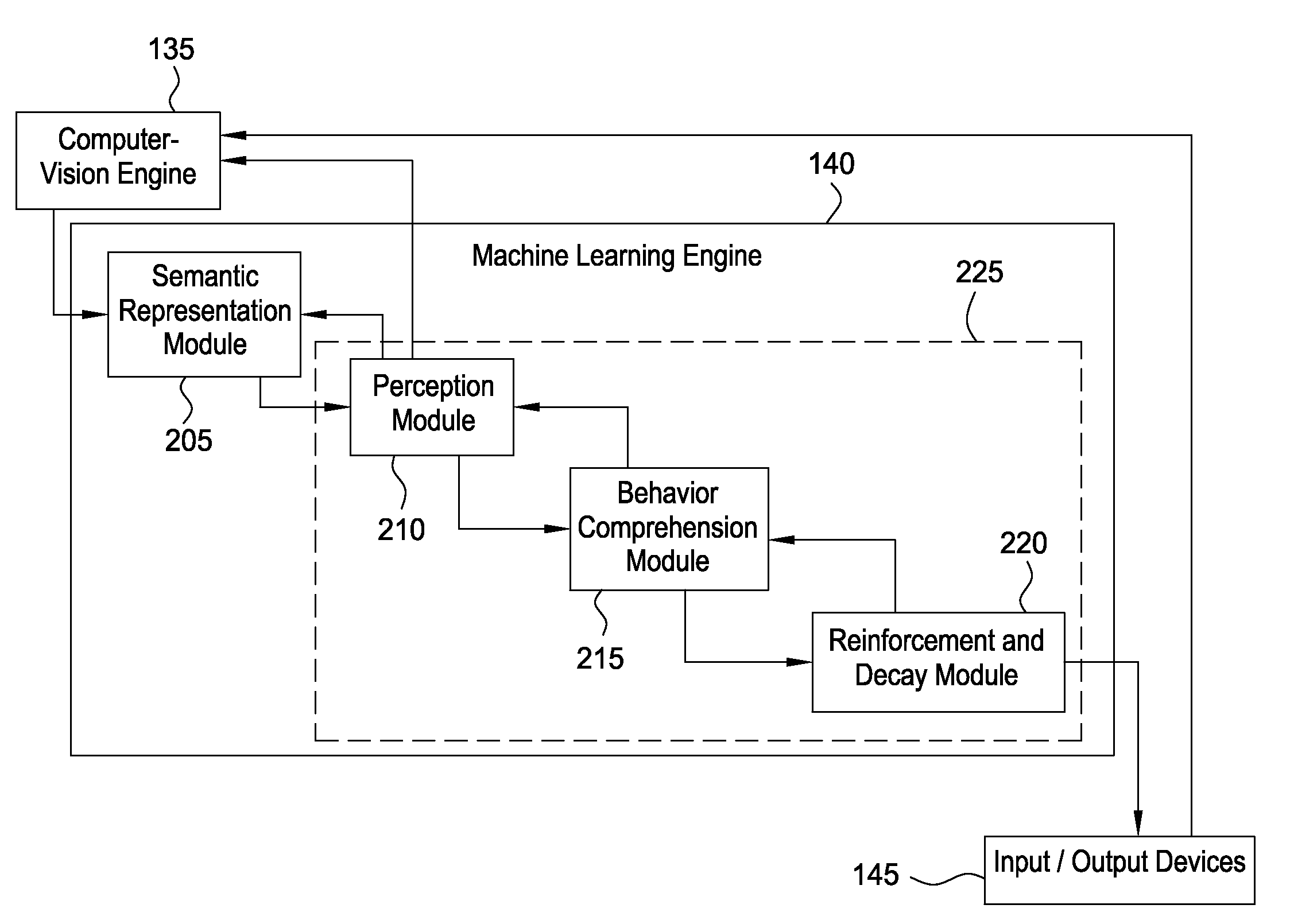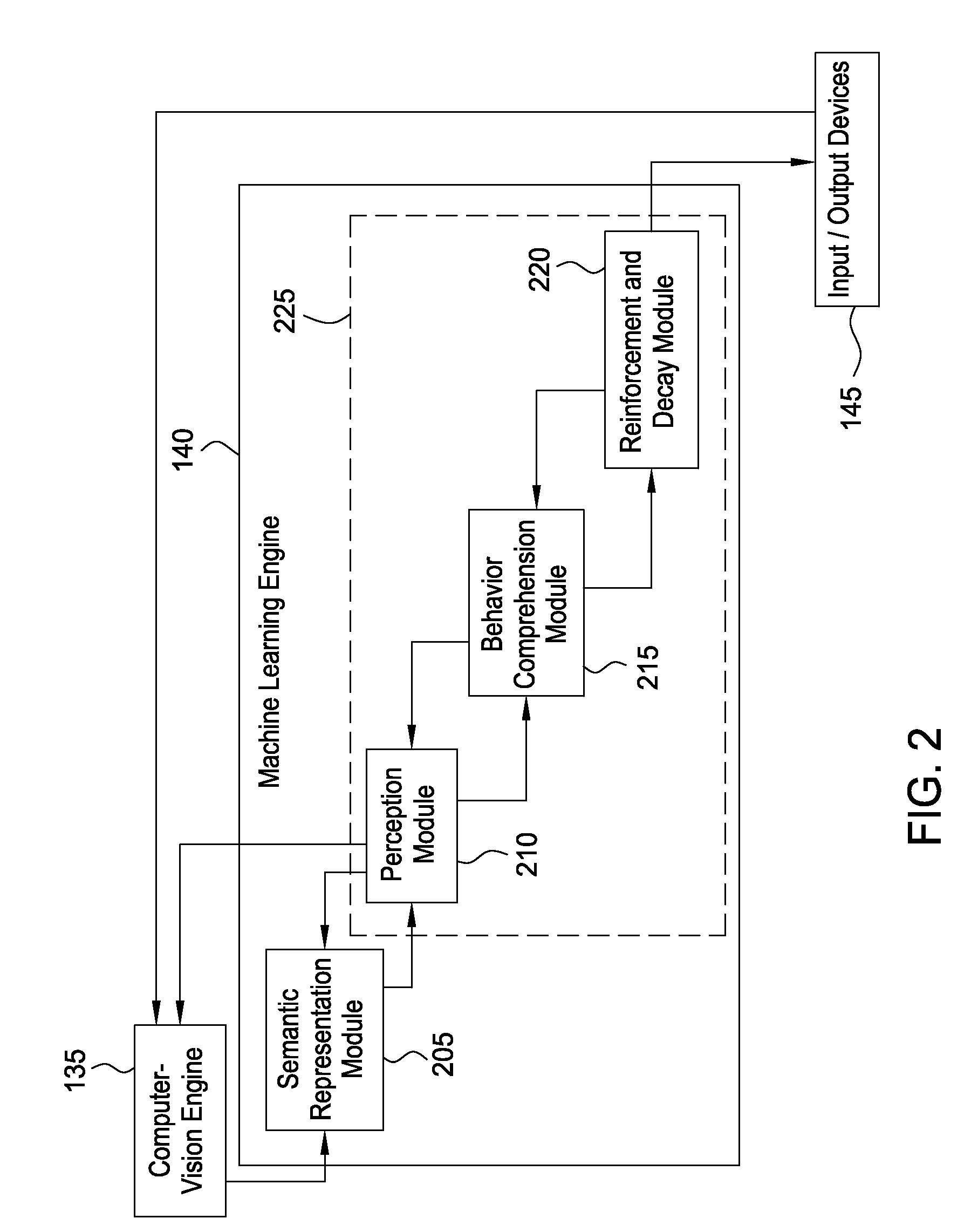Semantic representation module of a machine-learning engine in a video analysis system
a machine-learning engine and video analysis technology, applied in the field of video analysis, can solve the problems of system inability to recognize such behaviors, prohibitively expensive, labor-intensive surveillance systems with recognition capabilities,
- Summary
- Abstract
- Description
- Claims
- Application Information
AI Technical Summary
Benefits of technology
Problems solved by technology
Method used
Image
Examples
Embodiment Construction
[0020]Machine-learning behavior-recognition systems learn behaviors based on information acquired over time. In context of the present invention, information from a video stream (i.e., a sequence of individual video frames) is analyzed. Embodiments of the invention provide a machine-learning engine configured to recognize and learn behaviors, as well as to identify and distinguish between normal and abnormal behavior within a scene, by analyzing movements and / or activities (or absence of such) over time. Normal / abnormal behaviors need not all be pre-defined or hard-coded. Instead, the machine-learning engine described herein rapidly learns what is “normal” for a given environment and identifies abnormal behaviors based on what is learned through monitoring the scene, i.e., by analyzing the content of recorded video, frame-by-frame.
[0021]In one embodiment, a computer vision engine is connected with a machine learning engine. Generally, the computer vision engine receives an input vid...
PUM
 Login to View More
Login to View More Abstract
Description
Claims
Application Information
 Login to View More
Login to View More - R&D
- Intellectual Property
- Life Sciences
- Materials
- Tech Scout
- Unparalleled Data Quality
- Higher Quality Content
- 60% Fewer Hallucinations
Browse by: Latest US Patents, China's latest patents, Technical Efficacy Thesaurus, Application Domain, Technology Topic, Popular Technical Reports.
© 2025 PatSnap. All rights reserved.Legal|Privacy policy|Modern Slavery Act Transparency Statement|Sitemap|About US| Contact US: help@patsnap.com



